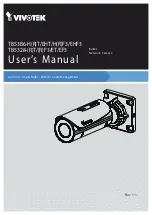
798
Configuring IP Unicast Routing
Prerequisites
Figure 97
Routing Topology Example
When Host A in VLAN 10 needs to communicate with Host B in VLAN 10, it sends a packet addressed to that host.
Switch A forwards the packet directly to Host B, without sending it to the router.
When Host A sends a packet to Host C in VLAN 20, Switch A forwards the packet to the router, which receives the traffic
on the VLAN 10 interface. The router checks the routing table, finds the correct outgoing interface, and forwards the
packet on the VLAN 20 interface to Switch B. Switch B receives the packet and forwards it to Host C.
Types of Routing
Routers and Layer 3 switches can route packets in the following ways:
By using default routing—sending traffic with a destination unknown to the router to a default outlet or destination.
By using preprogrammed static routes for the traffic
Static unicast routing forwards packets from predetermined ports through a single path into and out of a network.
Static routing does not automatically respond to changes in the network and therefore, might result in unreachable
destinations.
By dynamically calculating routes by using a routing protocol
Dynamic routing protocols are used by routers to dynamically calculate the best route for forwarding traffic. Routing
protocols supported by the switch are Routing Information Protocol (RIP), Border Gateway Protocol (BGP), Open
Shortest Path First (OSPF) protocol, Enhanced IGRP (EIGRP), System-to-Intermediate System (IS-IS), and
Bidirectional Forwarding Detection (BFD).
Prerequisites
In order to use dynamic routing protocols, an IP Services License is needed.
To support VLAN interfaces, create and configure VLANs on the switch, and assign VLAN membership to Layer 2
interfaces.
By default, IPv4 routing is disabled on the switch, and you must enable it before routing can take place. See
IPv4 Unicast Routing, page 816
.
We recommend that you configure the BFD interval parameters on an interface before configuring the routing
protocol commands, especially when using EIGRP. For information about BFD, see
.
Guidelines and Limitations
In the following procedures, the specified interface must be one of these Layer 3 interfaces:
—
A routed port: a physical port configured as a Layer 3 port by using the
no switchport
interface configuration
command.
18071
A
B
C
Host
Host
Host
Switch A
Switch B
VLAN 10
VLAN 20
ISL Trunks
Summary of Contents for IE 4000
Page 12: ...8 Configuration Overview Default Settings After Initial Switch Configuration ...
Page 52: ...48 Configuring Interfaces Monitoring and Maintaining the Interfaces ...
Page 108: ...104 Configuring Switch Clusters Additional References ...
Page 128: ...124 Performing Switch Administration Additional References ...
Page 130: ...126 Configuring PTP ...
Page 140: ...136 Configuring CIP Additional References ...
Page 146: ...142 Configuring SDM Templates Configuration Examples for Configuring SDM Templates ...
Page 192: ...188 Configuring Switch Based Authentication Additional References ...
Page 244: ...240 Configuring IEEE 802 1x Port Based Authentication Additional References ...
Page 298: ...294 Configuring VLANs Additional References ...
Page 336: ...332 Configuring STP Additional References ...
Page 408: ...404 Configuring DHCP Additional References ...
Page 450: ...446 Configuring IGMP Snooping and MVR Additional References ...
Page 490: ...486 Configuring SPAN and RSPAN Additional References ...
Page 502: ...498 Configuring Layer 2 NAT ...
Page 770: ...766 Configuring IPv6 MLD Snooping Related Documents ...
Page 930: ...926 Configuring IP Unicast Routing Related Documents ...
Page 976: ...972 Configuring Cisco IOS IP SLAs Operations Additional References ...
Page 978: ...974 Dying Gasp ...
Page 990: ...986 Configuring Enhanced Object Tracking Monitoring Enhanced Object Tracking ...
Page 994: ...990 Configuring MODBUS TCP Displaying MODBUS TCP Information ...
Page 996: ...992 Ethernet CFM ...
Page 1066: ...1062 Using an SD Card SD Card Alarms ...
















































